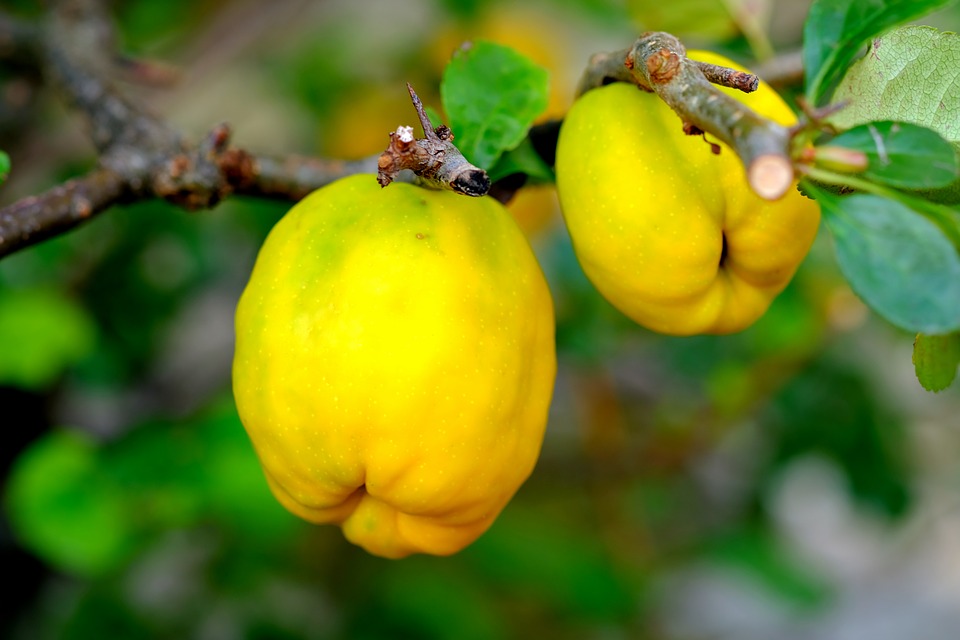Quince is the sole member of the genus Cydonia in the family Rosaceae, which also contains apples and pears, among other fruits. It’s a deciduous tree that bears a pome fruit that looks similar to a pear, but is bright golden-yellow when mature. Take a look below for 26 more fun and interesting facts about quince.
1. Quince is native to rocky slopes and woodland margins in South-West Asia, Armenia, Turkey, Georgia, northern Iran to Afghanistan.
2. The fruit should not be confused with its relatives, the Chinese quince, or the flowering quinces of genus Chaenomeles, either of which is sometimes used as a culinary substitute.
3. Quince was known to the Akkadians, who called it “supurgillu”, a well as in Judea of Israel during the Mishnaic era where it was called “perishin.”
4. Quince was cultivated from an archaic period around the Mediterranean.
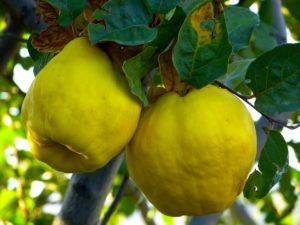
5. The Greeks associated quince with Cydonia on Crete.
6. Pliny the Elder mentions many varieties of quince in his Natural History and described four.
7. In Turkey, the expression “ayvayi yemek”, meaning literally “to eat the quince”, is used as a derogatory term indicating any unpleasant situation or a malevolent incident to avoid.
8. When a baby is born in the Balkans, a quince tree is planted as a symbol of fertility, love and life.
9. Ancient Greek poets, such as Aristophanes, used quinces as a mildly ribald term for teenage breasts.
10. The cultivation of quince started 4000 years ago.
11. Quince thrives both in temperate and semi-tropical areas, but it produces the best quality fruit in warmer areas.
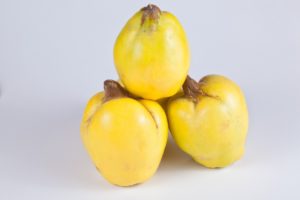
12. Quince is a small tree that can reach 16 to 26 feet in height.
13. Quince develops simple, ovate leaves with smooth margins. They’re pale green colored due to a dense layer of white hairs on the surface. The leaves are alternately arranged on the branches.
14. Quince produces large, pink or white individual flowers at the end of the branches. The flowers contain both types of reproductive organs.
15. The fruit blooms during the spring and summer. Quince flowers attract bees, who are natural pollinators, but they’re also able to perform self-pollination.
16. Quince that grows in temperate regions produces unpalatable, tart and astringent fruit that needs to be thermally processed before eating.
17. Quince can consumed in the form of compotes, preserves, jellies or as an ingredient of dishes made of seafood, poultry and lamb.
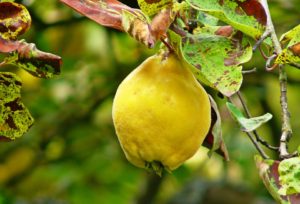
18. Quince that grows in tropical areas produces fruit with soft flesh which tastes like a blend between an apple and a pear. Tropical quince can be eaten raw.
19. Quince is a rich source of dietary fibers, vitamin C and minerals such as copper, iron, potassium and magnesium.
20. Quince is best known by its strong, tropical and fruity aroma. The fruit was a big part of wedding ceremonies in ancient Greece. The bride usually ate quince to ensure that she had pleasantly smelling, perfumed lips.
21. The fruit was popular and often eaten in ancient Rome. Romans usually prepared quince by mixing it with honey and leek.
22. Quince if often used as a rootstock for grafting pears. Created hybrids remain small in size, but they produce substantial amounts of fruit that reach maturity much more quickly.
23. Turkey is the biggest manufacturer of quince in the world with nearly 128,000 metric tons of fruit produced each year.
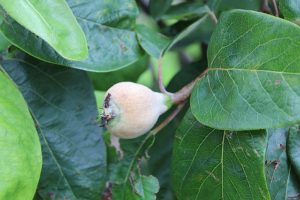
24. Compounds isolated from quince have been shown to reduce blood cholesterol levels, prevent the development of certain types of cancer and treat inflammatory bowel disease.
25. Mucus obtained by soaking quince seeds in water can be used to treat skin irritation and gastrointestinal discomfort.
26. Quince is a perennial plant and can survive more than 50 years in the wild.

